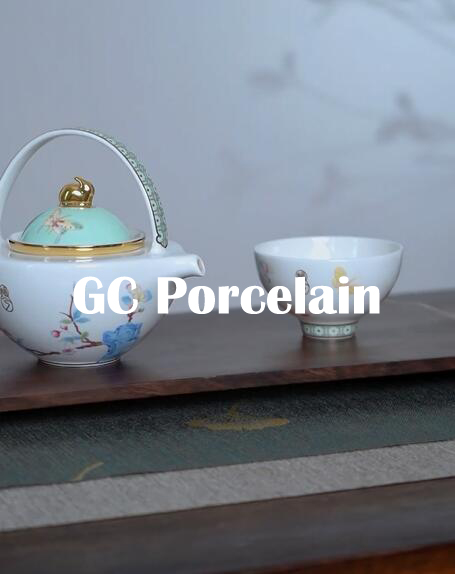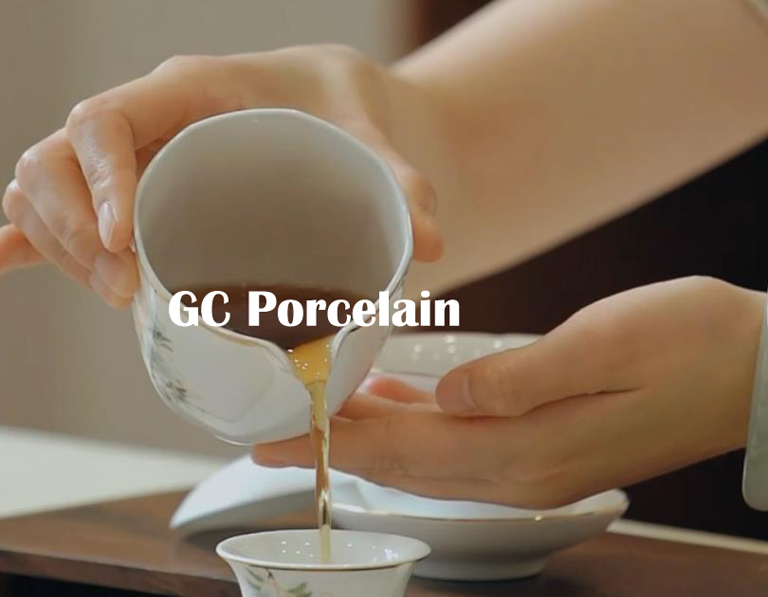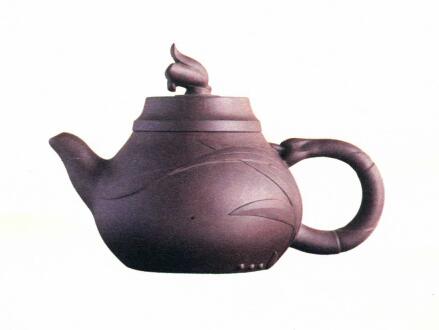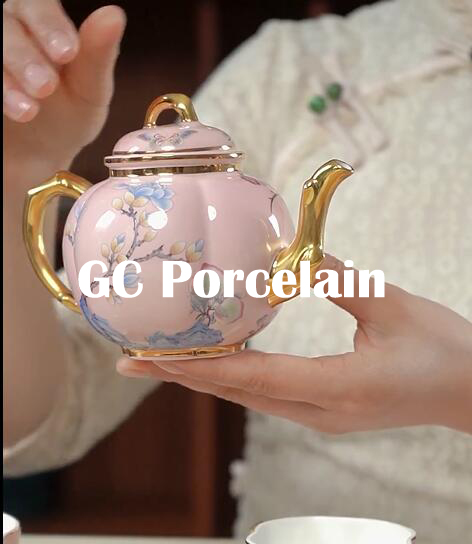In daily life, although everyone drinks tea and anyone can brew tea, to drink good tea and brew good tea is not an easy task. There is a great deal of knowledge involved.
The sequence of tea brewing
Different types of tea require different brewing methods. Even for the same type of tea, there are various brewing techniques. Among the many types of tea, due to the different characteristics of each, some emphasize tea aroma, some emphasize tea flavor, some emphasize tea shape, and some emphasize tea color. This requires different focuses in tea brewing and corresponding methods to bring out the unique qualities of the tea. However, no matter how the tea brewing techniques vary, to brew any kind of tea, besides preparing the tea, choosing the water, boiling the water, and selecting the utensils, the following brewing sequence must be commonly followed.
① Cleaning the utensils: Rinse the teapot with hot water, including the spout and lid, and scald the teacups with boiling water. Then, drain the teapot and teacups. The purpose is to clean the tea utensils and raise their temperature, so that the tea leaves can be brewed at a relatively stable temperature without dropping too quickly.
② Placing the tea: According to the size of the teapot or teacup, put in a certain amount of tea leaves.
③ Brewing: After placing the tea, pour boiling water into the pot according to the ratio of tea to water. When pouring water, except for oolong tea, where the water should overflow the pot mouth and spout, usually, it is appropriate to fill the pot to eight-tenths full. If using a glass or white porcelain cup to brew fine tender famous tea for appreciation, the water should also be filled to seven or eight-tenths full. When pouring water, the method of "Phoenix nods three times" is often used, which means tilting the kettle down and lifting it up three times. This signifies the host nodding to the guests, welcoming them; it also allows the tea leaves and water to mix well, ensuring the tea infusion has an even concentration.
④ Serving the tea: When serving tea, the host should smile and preferably use a tea tray to serve the guests. If serving tea directly with a teacup, avoid touching the rim of the cup with fingers to avoid contaminating the utensils. When serving tea from the front, use both hands to hold the tea and present it close to the guest, with the left hand extended in a palm gesture to show respect. When serving tea from the side, if from the left side, hold the cup with the left hand and make a "please have tea" gesture with the right hand; if from the right side, hold the cup with the right hand and make a "please have tea" gesture with the left hand. At this time, the guest can use their right hand to gently tap the table with four fingers (excluding the thumb) or nod slightly to express thanks.
⑤ Appreciating the tea: If drinking high-quality famous tea, do not rush to drink it after brewing. First, observe the color and shape of the tea leaves, then bring the cup close to smell the aroma, and finally taste the tea soup. When tasting, let the tea soup flow from the tip of the tongue along both sides to the back of the tongue and then back to the tongue, repeating this 2-3 times to leave a lingering fragrant and sweet aftertaste.
⑥ Adding water: Generally, when two-thirds of the pot (cup) of tea soup has been drunk, water should be added. If water is added only after all the tea soup has been drunk, the subsequent tea soup will be bland and tasteless. Water is usually added 2-3 times, and if you want to continue drinking tea, a new brew should be made.
Choice of Water for Brewing Tea
There are various types of tea, and there are many kinds of water; only with good tea and good water can the taste be excellent. This explains the relationship between tea and water. Therefore, since ancient times, people have always discussed water when talking about tea, always linking tea with water. In the Qing Dynasty, Zhang Dafu also mentioned in 'Meihuacaotang Bitan': 'Tea's character must be expressed through water. Eight parts of tea meeting ten parts of water will make tea ten parts good; eight parts of water with ten parts of tea will make tea only eight parts good.' This shows that water is crucial for the full expression of tea's character. Not only because water is the carrier of tea's color, fragrance, taste, and shape, but also because when drinking tea, the manifestation of various substances in tea, the pleasant sensations, and the endless aftertaste, all derive from the nutritional and pharmacological components of tea, which are realized through brewing tea with water, observed with the eyes, smelled with the nose, and tasted with the mouth. If the water quality is poor, many of the intrinsic substances in the tea will be affected. When drinking tea, one would neither smell the fragrance of the tea leaves nor taste the mellow sweetness of the tea, nor see the crystal-clear tea soup, thus losing the benefits of drinking tea, especially the material, spiritual, and cultural enjoyment that tea tasting brings.
Technique of Boiling Water
To drink a good cup of tea, it is essential to achieve the 'three harmonies' of tea, water, and fire. Practical experience shows that good tea without good water cannot fully develop its unique flavor and might even give a feeling of 'unpleasantness'. However, even with good tea and good water, if the 'control of the fire' in boiling water is improper, the 'essence' of the tea will not be fully expressed. Therefore, it is helpful to explain some tips on boiling water from both theoretical and practical perspectives, combining ancient tea-drinking methods with contemporary tea-drinking habits.
(1) Mastering the Degree of Boiling Water
In the history of tea drinking in China, before the Song Dynasty, people mainly drank cake tea and compressed tea, which is somewhat similar to today's decocting of Chinese medicine, referred to as boiling tea. This method of boiling tea is quite different from the current method of boiling water for brewing tea. Strictly speaking, the process of boiling tea includes two steps: boiling water and simmering tea. Regarding boiling water, Lu Yu in the Tang Dynasty mentioned in 'The Classic of Tea': 'When it boils like fish eyes and has a slight sound, it is the first boil; when the edges are like a spring bubbling continuously, it is the second boil; when it surges like waves, it is the third boil; beyond this, the water is old and should not be consumed.' Here, the first, second, and third boils refer to the stages of boiling water. According to Lu Yu, the water is suitable when it goes beyond the 'fish eyes' stage and the 'continuous bubbling' occurs. Otherwise, the water becomes 'old' and 'should not be consumed.' Emperor Huizong of the Song Dynasty, Zhao Ji, also mentioned the standard for boiling water in 'Treatise on Tea': 'The water should boil until fish eyes and crab eyes leap continuously.' This statement is scientifically valid. Experienced tea connoisseurs know that since the carbon dioxide in the boiling water has evaporated, the brewed tea will have a fresh taste. If tea is brewed with water that has not boiled, many quality components of the tea leaves are difficult to extract due to the low water temperature, resulting in a weak taste and low aroma of the tea soup; it may also cause the tea leaves to float on the surface, affecting the tasting experience. Therefore, when brewing tea with water, the appropriate boiling is crucial for the utilization of tea and the quality of the brewed tea water. Since the Song Dynasty, with the development of different types of tea, the original method of boiling tea has evolved into the method of pouring water over tea. After the Ming Dynasty, with the increasing popularity of loose tea, the method of pouring boiling water over tea leaves became more widespread. Brewing tea involves directly pouring boiling water over the tea leaves, hence the importance of water quality and requirements for boiling water, such as the 'old' and 'young' water, 'active' and 'decayed' fuel, and the 'fast' and 'slow' control of the fire. Therefore, mastering the degree of boiling water is essential. Some people distinguish by 'sound,' others by 'appearance,' but everyone knows that brewing tea with unboiled water is ineffective. If boiling water is repeatedly heated or boiled for a long time, it will affect the taste. Prolonged boiling or multiple reboilings of water lead to the evaporation of a significant amount of water vapor, leaving more salts and other substances in the remaining water, particularly increasing the nitrite content, resulting in a more bitter and astringent tea taste and a duller color of the tea soup. Therefore, the saying 'old water should not be consumed' is reasonable.
(2) Selection of Fuel for Boiling Water
The ancients used smokeless charcoal to boil water, which was very good. However, today, in many large and medium-sized cities, the energy sources for boiling water mainly include coal, electricity, and natural gas. For example, in the vast areas of Northwest China and north of the Yangtze River, where coal reserves are abundant, people primarily use coal to boil water. However, when boiling water with coal, scientific requirements must be met: firstly, the coal should be fully ignited before placing the kettle to avoid prolonged simmering over low heat; secondly, the kettle should be covered except for the spout to prevent contamination from the smoke and other odors from the coal. In large and medium-sized cities, boiling water with electricity or gas is clean, hygienic, simple, and convenient. To meet the requirement of 'active fire' burning vigorously, the heat source should be turned up as much as possible to avoid low heat slow boiling. In rural areas, some use firewood to boil water. According to the scientific requirements for boiling water, the firewood should be hard and burning vigorously; the kettle should be covered to avoid contamination from other odors; and low heat slow boiling should be avoided. Regardless of the energy source used for boiling water, the following two conditions should be met:
- The fuel should have good combustion performance and generate large and lasting heat, so that the boiling time is not prolonged, preventing the water from losing its freshness and cleanness.
- The fuel should not produce smoke or odors to avoid contaminating the water used for brewing tea, thus affecting the tea's clear and fragrant taste.
The Ratio of Tea to Water
The ratio of tea leaves to boiling water should also be adjusted accordingly. Generally speaking, for bulk black, green, and flower teas, it is advisable to use 50-60 milliliters of boiling water per gram of tea leaves. Typically, a standard 200-milliliter teacup requires 3-4 grams of tea leaves. When brewing, first pour one-third of the cup with boiling water. After a while, fill it up to about seventy to eighty percent full. This is because there is a saying in China, "Full cup of wine shows respect, full cup of tea shows disrespect." If using a teapot, you can also follow the aforementioned ratio for brewing.
The amount of tea used can be adjusted based on the drinker's preference. If the tea drinker is a seasoned tea enthusiast or a manual laborer, you can increase the amount of tea to make a strong, aromatic brew. If the tea drinker is an intellectual worker or someone not accustomed to drinking tea, you can use fewer tea leaves to make a light and mellow brew. If you are unsure of the tea drinker's preference and it is your first meeting, it is advisable to follow the general guidelines mentioned earlier to brew a tea with a moderate strength.
Controlling the Water Temperature for Brewing Tea
Controlling the appropriate water temperature is an important factor in tea brewing. The type of tea leaves and their raw materials determine the water temperature: tea leaves made from coarser materials should be brewed with boiling water; tea leaves made from finer materials should be brewed with slightly cooled boiling water. Specifically, for tea leaves made from coarse materials like brick tea, even if broken into pieces and brewed with boiling water at 100°C, it is hard to extract the tea essence. Therefore, when drinking brick tea, the broken tea should be placed in a container, water added, and then boiled to drink. Oolong tea, processed from nearly mature tea leaves, should be brewed with boiling water at 95°C, although some meticulous tea drinkers prefer to preheat the teaware before brewing. Bulk black, green, and flower teas, processed from moderately picked materials, can be brewed with water at around 90°C. For high-grade, finely picked teas like Dongting Biluochun, West Lake Longjing, Nanjing Yuhua Tea, Junshan Yinzhen, etc., brewing with boiling water would cook the tea leaves, changing their color and destroying beneficial nutrients like vitamin C, thus diminishing the tea's aroma and fresh taste. Therefore, for these delicate teas, use water from a thermos that has been stored for 3-4 hours. Generally, using water at 70-80°C is suitable for brewing high-grade, delicate teas. This ensures a clear and bright tea infusion, pure aroma, fresh and mellow taste, and bright leaves, providing a pleasurable experience both visually and gustatorily.
Brewing Time
The brewing time determines the extent to which the beneficial components in the tea leaves are utilized. Research indicates that after brewing tea leaves with boiling water, vitamins, amino acids, and caffeine are the first to be extracted, reaching a high concentration in the tea infusion within three minutes. These components make the tea taste fresh and mellow but lack the stimulating taste. As brewing time extends, polyphenols are gradually extracted, reaching a high concentration around five minutes. At this point, the tea tastes less fresh and more bitter. Therefore, for general bulk black and green teas, brewing for 3-4 minutes results in the best flavor.
The tenderness and processing method of the tea leaves determine the extraction rate of various substances. Generally, tender tea leaves extract more easily than coarse leaves, so a shorter brewing time is needed. Loose tea leaves extract more easily than compressed tea, requiring a shorter brewing time. Crushed tea leaves extract more easily than whole leaves, necessitating a shorter brewing time. Thus, compared to bulk tea, high-grade tender tea requires less tea, smaller teaware, less water, shorter brewing time, and should be brewed uncovered. For aroma-focused teas like oolong and flower teas, to prevent aroma loss, cover the teaware and brew for 2-3 minutes. For compressed teas like brick tea, which focus on flavor rather than aroma, boiling or long-time stewing is usually employed. For broken black tea, often used to make milk tea, and granular green tea, often used for tea bags, their finely cut processing allows quick extraction, thus requiring a short brewing time and generally only one infusion.
| Tips | Source |
|---|---|
| Optimal water temperature for green tea is 170-185°F (76-85°C) | teadelight.net |
| Black tea should be brewed at 200-212°F (93-100°C) | chineseteaworld.com |
| Oolong tea requires 185-205°F (85-96°C) | travelchinaguide.com |
| White tea is best brewed at 160-185°F (71-85°C) | teasenz.com |
| Pu-erh tea needs boiling water at 212°F (100°C) | topchinatravel.com |
| Proper tea brewing requires pre-warming the teapot | teadelight.net |
| Tea steeping times vary: green tea 1-3 minutes, black tea 3-5 minutes | chineseteaworld.com |
| Gaiwan is a traditional Chinese tea brewing vessel used for its versatility | teasenz.com |
| The ideal environment for tea tasting is quiet and free from strong odors | travelchinaguide.com |
| Tea tasting involves assessing the tea's appearance, aroma, taste, and aftertaste | topchinatravel.com |
Number of Infusions
The type of tea and the way it is consumed determine the number of infusions. For tea bags and broken black tea, since their components extract easily, they are usually infused once and then discarded. Strip-shaped green teas like eyebrow tea, flower tea, and oolong tea extract more slowly, usually allowing 2-3 infusions. Tests show that the first infusion extracts about 55% of the soluble substances, the second about 30%, the third about 10%, and the fourth only 1-3%. In terms of nutrients, about 80% of the vitamin C and amino acids are extracted in the first infusion, and over 95% in the second. Most of the active ingredients like polyphenols and caffeine are also primarily extracted in the first three infusions. Therefore, for general bulk teas, three infusions are optimal. In terms of aroma and taste, the first infusion is fresh, the second is strong but less fresh, the third loses aroma, and the fourth is tasteless. Flower teas can be infused 2-3 times; oolong tea can be infused 4-5 times; white tea only twice.
The Environment for Enjoying Tea
High-quality tea, pure water, proper brewing techniques, and exquisite tea utensils are the basic requirements for drinking tea. However, to elevate tea drinking from a physical enjoyment to a spiritual and artistic experience, the environment in which tea is enjoyed becomes significantly important.
1. Creating a Tea-Drinking Environment
Excellent tea, pure water, refined utensils, and appropriate brewing techniques make a good cup of tea. Additionally, an elegant environment for tea tasting transforms tea drinking from a simple activity to a comprehensive art of living. Therefore, besides savoring the essence of the tea itself, the creation of a tea-drinking environment is also crucial. Ideal environments include pavilions, terraces, small bridges over flowing streams, and secluded, elegant rooms.
A tea-drinking environment typically consists of gardens, buildings, and decorations. Generally, public tea-drinking venues vary in requirements based on the level, style, and purpose of the tea drinkers. High-level tea gatherings not only demand exquisite interior decorations but also unique architectural features. As a result, all high-end teahouses, tea rooms, and tea lounges in China are built accordingly. For example, Beijing's "Lao She Teahouse" features a rich Qing Dynasty style, with a stage inside, famous paintings and calligraphy on the walls, and seasonal flowers. People can enjoy famous teas from various regions, taste local delicacies, and watch performances.
Tea supply points at transportation hubs, along streets, in factories, and at construction sites serve the purpose of quenching thirst and cooling off. Thus, besides cleanliness and hygiene, there are no special requirements. For example, in the north, there is "big bowl tea," and in the south, "cool tea." A bucket of tea and a few clean tea bowls (or cups) provide relief for tired travelers and thirsty workers, refreshing them and quenching their thirst. Although this tea-drinking method lacks the elegance of tea tasting, it fits the modern lifestyle and is closer to the people’s everyday life, characterized by simplicity and practicality. Therefore, it is also well-received by the public.
As for drinking tea at home, the environment is inherent and hard to change, but one can still create a suitable tea-drinking ambiance. For instance, one can choose a sunny spot by the window, furnished with a tea table, sofa, or chairs. Placing some potted flowers or cut flowers on the windowsill, keeping the room tidy and clean, and maintaining a quiet, fresh, comfortable, and neat environment can make it a pleasant place for tea drinking.
2. From "Tea Preferences" to "Tea Taboos"
Throughout history, there have been numerous descriptions of the tea-drinking environment. The most detailed account is by Ming Dynasty's Feng Kebin in "The Book of Tea." He proposed 13 conditions suitable for tea drinking, as follows:
- "Leisure": Being free from worldly concerns, feeling free and easy, and enjoying oneself.
- "Good Guests": Meeting like-minded friends, having heartfelt conversations.
- "Secluded Sitting": A serene environment, peace of mind, and no worries.
- "Poetry": Tea inspires thoughts, and reciting poetry enhances the experience.
- "Calligraphy": Combining tea and ink, tea drinking and calligraphy can enhance the pleasure.
- "Strolling": Green mountains, bamboo groves, small bridges, and garden paths provide a leisurely experience.
- "Waking Up": A cup of fragrant tea after a nap clears the mind and refreshes the mouth.
- "Post-Meal": Tea can help sober up after drinking and eating.
- "Accompaniment": Having tea with tea snacks complements each other naturally.
- "Elegant Abode": The living space should be elegant to enhance the tea-drinking interest.
- "Understanding": Knowing the intricacies of tea, appreciating and understanding it deeply.
- "Appreciation": Proficiency in tea art, able to evaluate and appreciate tea.
- "Servant": Having a tea servant to boil water and serve tea efficiently.
Corresponding to the 13 favorable conditions, Feng also proposed 7 taboos unsuitable for tea drinking:
- "Improper Methods": Incorrect water boiling or tea brewing techniques.
- "Bad Utensils": Inappropriate or dirty tea utensils.
- "Unrefined Hosts or Guests": Rude behavior or lack of refinement in hosts and guests.
- "Formal Attire and Etiquette": Involuntary social engagements in formal settings.
- "Mixed with Strong Flavors": Heavy meat dishes and strong flavors that detract from the essence of tea.
- "Busy and Preoccupied": Too busy to appreciate and enjoy tea.
- "Messy Environment": Cluttered room, dirty surroundings, making it unpleasant and vulgar.

Summarizing the 13 rules for tea drinking and the 7 taboos, tea tasting includes four aspects: the psychological quality of the drinker, the inherent qualities of the tea, interpersonal relationships, and the surrounding natural environment. From ancient times to the present, China has placed great importance on the tea-drinking environment, believing that humans and nature should form a harmonious whole. A cultivated person should harmonize with nature, aligning their life activities with the natural environment. Drinking tea, especially tea tasting, is both a material enjoyment and an artistic appreciation. Therefore, the natural environment must be carefully selected, allowing the mind to resonate with nature, thus reaching a state of selflessness and transcendence in tea tasting. As for interpersonal relationships, it is said, 'A thousand cups of wine are too few when drinking with a bosom friend; a half sentence is too much when words do not flow.' This means that between people, there must be a kind of spiritual rapport, mutual understanding, and heartfelt connection.
If you have any questions or need to custom dinnerware service, please contact our Email:info@gcporcelain.com for the most thoughtful support!






